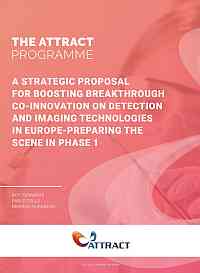In the summer of 2014, my colleague Dr. Pablo Garcia-Tello, Dr. Markus Nordberg (who was Resources Coordinator of the ATLAS project at CERN at the time), Dr. Marzio Nessi (who was then still overall technical coordinator and ATLAS project manager) and I started discussions on a new way of fostering breakthrough innovation that would do away with the typical serendipity conundrum. In many organisations, innovation is not a sustained and planned process; instead it is highly dependent on available time, money, capacity, management priority and many other factors. Public grants can act as innovation-facilitators, but in most cases the innovation stops as soon as the grant money is used up. It is then back to square one: applying for new grant funding, and convincing management that capacity and money will prove to have been well-spent…one day. This innovation serendipity conundrum leads to unnecessary waste of money, time and capacity. Moreover: it does not help society at large in meeting many of its challenges.
Our discussions centred on matching three concepts:
- streamlining of the breakthrough innovation process by coupling fundamental research at Research Infrastructures and their associated communities to private and public actors that can extract societally relevant innovations from them;
- introducing a co-innovation approach that allows truly joint and equal partnership collaboration between scientific and industrial communities;
- generating breakthrough innovation in a non-linear fashion by identifying the right combinations of breakthrough technology options that would sufficiently interest investment communities to start help push the innovation beyond the well-feared innovation ‘valley-of-death’.
The result was a proposal submitted by a group of European Research Infrastructures, a business university, a design-thinking university and an industry association, to the European Commission. That proposal, under the name ATTRACT, was highly successful in validating our three-step approach, and has since led to a sequel project in which game-changing innovations are guided in a sustained way from their basic science foundation to concrete societal applications. You can visit the ATTRACT website by clicking here.
You can also read our publication: ATTRACT-1 publication
